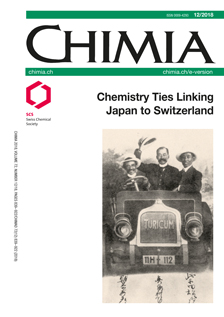Vinylidene ortho-Quinone Methides: Unique Chiral Reaction Intermediates in Catalytic Asymmetric Synthesis
DOI:
https://doi.org/10.2533/chimia.2018.892PMID:
30648957Keywords:
Asymmetric catalysis by chiral base, Cycloaddition, Dearomatization, Hydroarylation, Vinylidene ortho-quinone methideAbstract
Vinylidene ortho-quinone methides (VQMs) are one-carbon elongated homologues of ortho-quinone methides (QMs), well-known as useful reaction intermediates in organic transformations. These related quinone methides are quite distinct in terms of stereochemistry. Namely, VQMs are characterized by an exocyclic allenyl ketone unit merged with a dearomatized ring system and thus, can be rendered axially chiral by locating a substituent properly at the terminal methylene group of the allene moiety. It should be also noted that VQMs are tautomers of ortho-ethynylphenols and these isomeric species are correlated through a proton-shift (tautomerization). Focusing on these stereochemical and structural features, we have pursued the development of unprecedented asymmetric reactions involving enantioenriched VQM intermediates generated by chiral-base-catalyzed tautomerization of the ethynylphenol precursors. Indeed, commonly used chiral base catalysts such as cinchonine (CN) and cinchonidine (CD) have been successfully demonstrated to be effective to this end. In this account, we wish to briefly describe our recent studies on the asymmetric syntheses of optically active indeno[1,2-c]chromenes, benzofuro[3,2-b]indeno[1,2-c]chromenes, and benzo[a]carbazoles, based on the catalytic enantioselective generation of VQMs with CN or CD and the stereocontrolled intramolecular follow-up cyclization with tethered alkynes, benzofurans, and indoles, respectively.Downloads
Published
2018-12-19
Issue
Section
Scientific Articles
License
Copyright (c) 2018 Swiss Chemical Society

This work is licensed under a Creative Commons Attribution-NonCommercial 4.0 International License.
How to Cite
[1]
Chimia 2018, 72, 892, DOI: 10.2533/chimia.2018.892.







